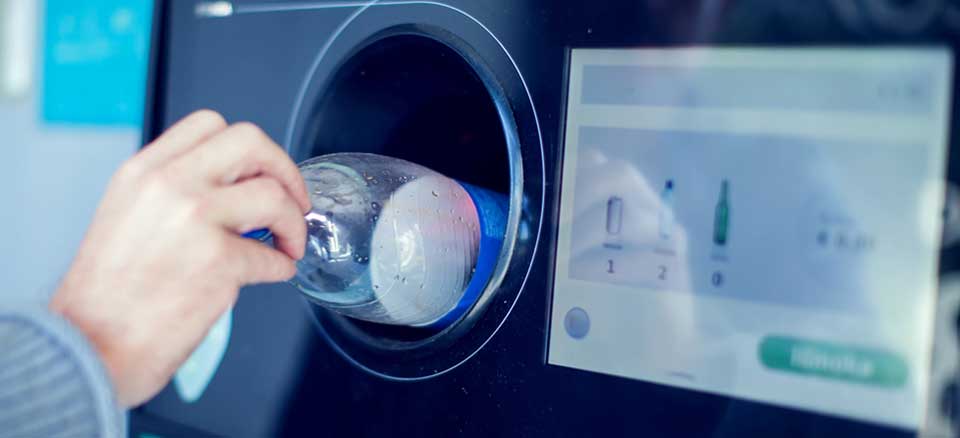
If nothing else, read this…
Bottle Bills are the best recycling programs for beverage containers. In fact, states with Bottle Bill programs collect and recycle beverage containers at far higher rates than states without these programs. Some of those states have even reached recycling rates of 90% – significantly higher than states without Bottle Bills. If we are going to push for any recycling program, it needs to be this one.
How do Bottle Bills work? Simply put, a small, refundable deposit (usually between 5-15 cents) is placed on bottles and cans. That deposit is returned to customers when they bring empty containers to authorized redemption centers and retailers for recycling.
Litter, Litter Everywhere
How many times have you found aluminum cans and plastic bottles littering streets, sidewalks, beaches, and waterways? Since elementary school, we’ve been told that these beverage containers are recyclable. And, that we all just need to do our part to reduce litter. But this false, individualistic narrative is pushed by corporations – the very culprits responsible for our waste crisis. Unsurprisingly, their narrative has not led to reduced litter or increased recycling rates.
For years, waste companies and the beverage industry have promoted curbside recycling as the answer to our waste crisis. But not everyone has access to these systems. In fact, many cities and towns – even entire states – provide limited access, or even no access, to curbside recycling programs. And many other cities, towns, and states are either cutting back services or terminating their programs altogether. This shouldn’t come as a shock. Not only is curbside recycling ineffective, but it’s also increasingly expensive – leaving cities and towns, several of which already work on tight budgets, responsible for managing all our waste.
To top it all off, combining all our recyclables in single-stream curbside recycling systems contaminates those materials, making them unrecyclable. For example, glass bottles often break in single-stream systems. Those shards of glass get mixed in with, or attached to, other materials like aluminum cans and paper. Because of this, the cans and paper become trash – unable to be sorted out properly for recycling. And so, these highly recyclable materials ultimately end up in toxic landfills and incinerators.
Putting the Responsibility Back on Beverage Companies
What is a Bottle Bill? Simply put, it’s a recycling system specifically for bottles and cans. But let’s get more specific. Bottle Bill programs place a small, refundable deposit (usually between 5-15 cents) on beverage containers at checkout.
Customers can return the empty container at an authorized redemption center or to retailers like grocery stores and liquor stores. Many grocery stores have “reverse vending machines” that make it easy for customers to return their empty containers on their weekly grocery shopping trip. And, when customers return an empty container at one of these centers or stores, they get their deposit back.
States with Bottle Bills have higher beverage container recycling rates than states that rely solely on single-stream, curbside services. And redemption centers and reverse vending machines are an integral part of that success. The fact is these systems work. And they have worked since Oregon implemented the country’s very first Bottle Bill in 1972.
Here’s the brilliant part: Bottle Bills don’t cost taxpayers money. How, then, do they operate? With funding from beverage giants. These companies, or their distributors, pay fees to retailers and redemption centers for collecting, sorting, and packaging bottles and cans for recycling. This way, the financial responsibility of recycling gets put on the companies profiting off all these bottles and cans in the first place.
The Most Effective Recycling System
Currently, only 10 states have Bottle Bills. Some of those states collect more than 90% of covered beverage containers – significantly higher than states without Bottle Bill programs. It goes to show that a financial incentive, as well as separating beverage containers into their own recycling stream, can have a large impact.
History has shown that the most successful Bottle Bill programs:
- Have a deposit fee of 10 cents or more,
- Include a wide variety of beverage containers,
- Have several authorized redemption centers and reverse vending machines that residents can easily access, and
- Set specific performance targets and goals.
But Bottle Bills can be even more effective. For that to happen, all current and future Bottle Bill programs should aim for recycling rates of 90% or higher. They also need to include pathways towards refill and reuse systems for glass containers. What’s more, Bottle Bills need to clearly define the word “recycling.” This ensures that the materials used for beverage containers are turned back into beverage containers – and not “downcycled” into clothing or construction materials.
Bottle Bills are Key to a Zero Waste Future
As the climate crisis worsens, we need to keep recyclables out of polluting landfills and incinerators and reduce demand for virgin resources extracted from our environment. Bottle Bills are an excellent, cost-effective solution that address a huge part of our country’s waste crisis. They ensure recyclable cans and bottles will be recycled, and they hold beverage companies accountable for the waste they create.
But to be truly effective, we need to update existing Bottle Bill programs and introduce modernized bottle recycling legislation in more states across the country. Just Zero is working to do just that. Sign up for our emails today to stay in the loop on our Bottle Bill work and how you can help!